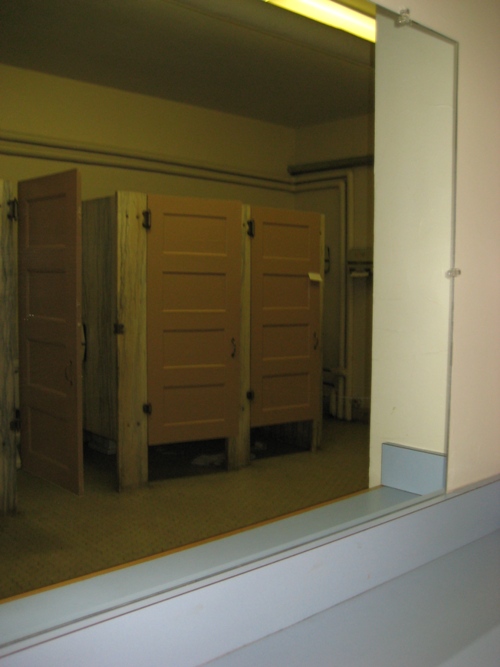I Died For Beauty
I died for beauty but was scarce
Adjusted in the tomb,
When one who died for truth was lain
In an adjoining room.
He questioned softly why I failed?
"For beauty," I replied.
"And I for truth, the two are one;
We brethren are," he said.
And so, as kinsmen met a night,
We talked between the rooms,
Until the moss had reached our lips,
And covered up our names.
Emily Dickinson
We want to believe the monuments we create are eternal and that they can never be erased by time. However, this memorial is wiped clean with some Windex and a rag every 12 months. Despite our belief in the indelible marker, the everlasting Sharpie, and our faith in the study wood of the stall doors, this monument was never intended to last forever. It was intended to change and move.
In the case of this monument, the materiality is forever wiped away only to be replaced with more scribbles and doodles. Like Sisyphus pushing the boulder up the hill only to have it roll down again, these stalls are doomed to be reinvented and demolished every year. Yet, perhaps that is the point. Victor Hugo tells us that the written word has become the method whereby the memories of the human race are passed down through history. Thus, the words on the backs of the stalls are slowly planted into our collective memory, going beyond the physicality of the architecture on which they were written.
“For if we accept that the most fundamental purpose of the lieu de memoire is to stop time, to block the work of forgetting, to establish a state of things, to immortalize death, to materialize the immaterial- just as if gold were the only memory of money- all of this in order to capture a maximum of meaning in the fewest of signs, it is also clear that the lieu de memoire only exist because of their capacity of metamorphosis, an endless recycling of their meaning and an unpredictable proliferation of their ramifications.” Pierre Nora
The destruction of the poetry was just as much a part of the memorial’s creation as its obliteration. The memorial constantly reinvents itself, remaining valid despite changes over time. Although the words of the past authors do not remain, the act of the writing remains an honor to their creativity. So, although the poetry of last year might be gone, it still exists in the greater social memory to inspire new authors to share their thoughts, wishes, and attitudes. On and on, this ritual will faithfully be renewed as a constant reminder of the past.
“I loved it. I loved it when it got erased and you rewrite over it. People get disheartened when it gets erased but they shouldn’t. They should just rewrite it.” Annie Rose
It is my belief that the power of this monument is not about the words written on the stalls, but rather the action of writing on the stalls. The actual monument is the unspoken interaction between the writer and the readers, who never exist temporally or spatially together, and yet they compose the same collective memory. It seems that Pierre Nora was right when he said “record as much as you can, something will remain”. The visitors to this lieu de memoire write down all that they can in hope that something will move beyond the tangible and ingrain itself into a memory to be passed on to future generations of students.

Back to Latrinalia
